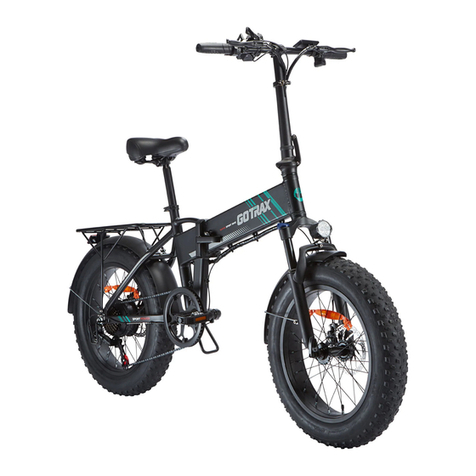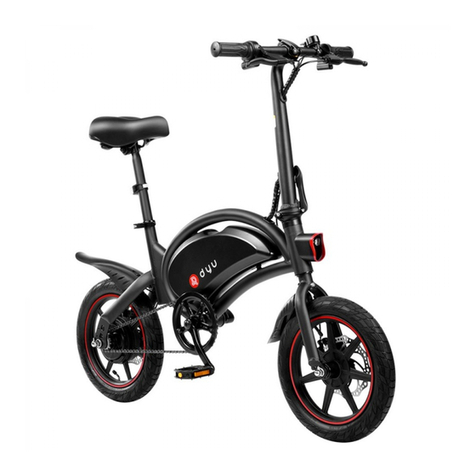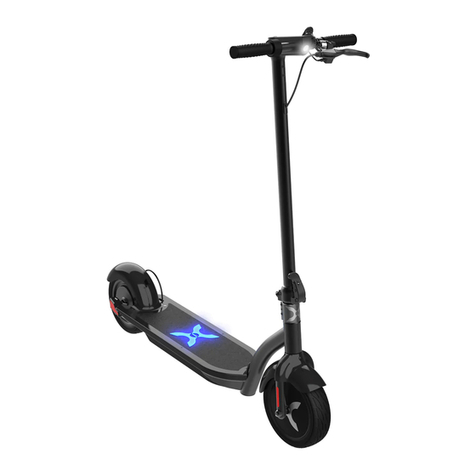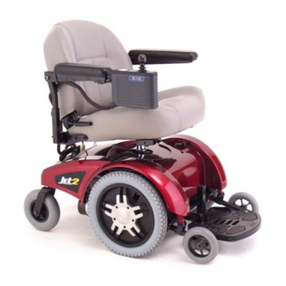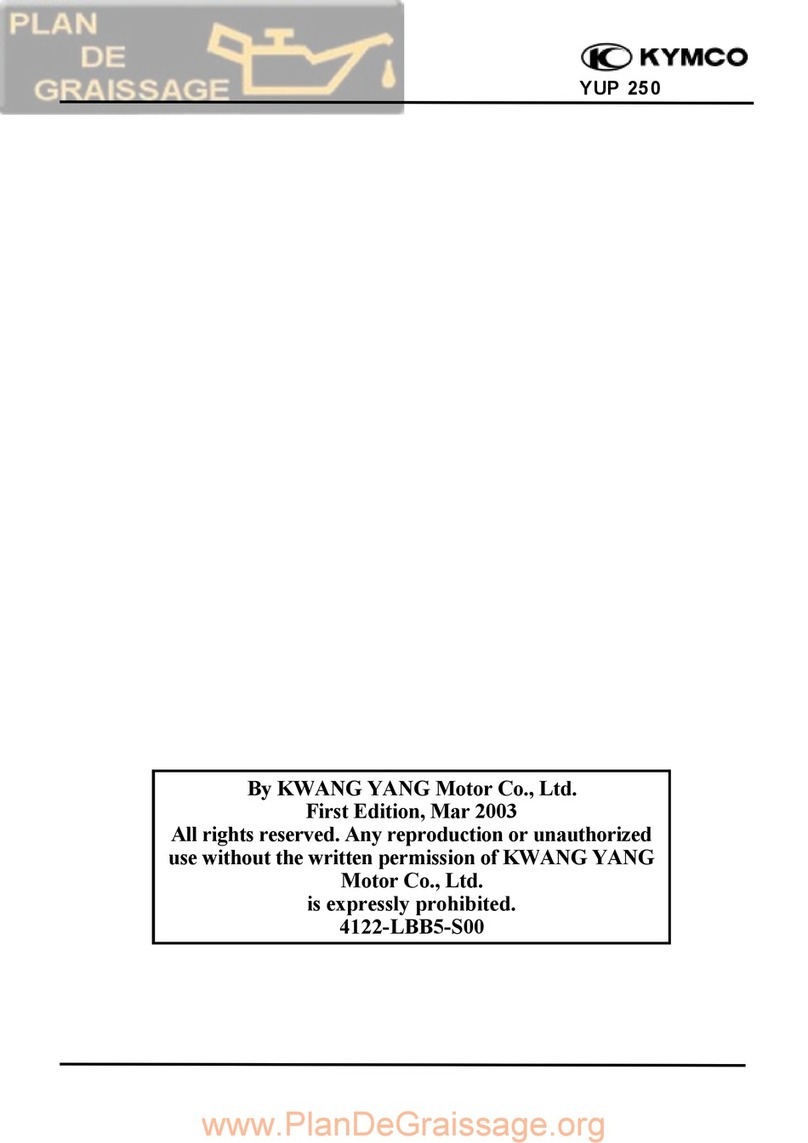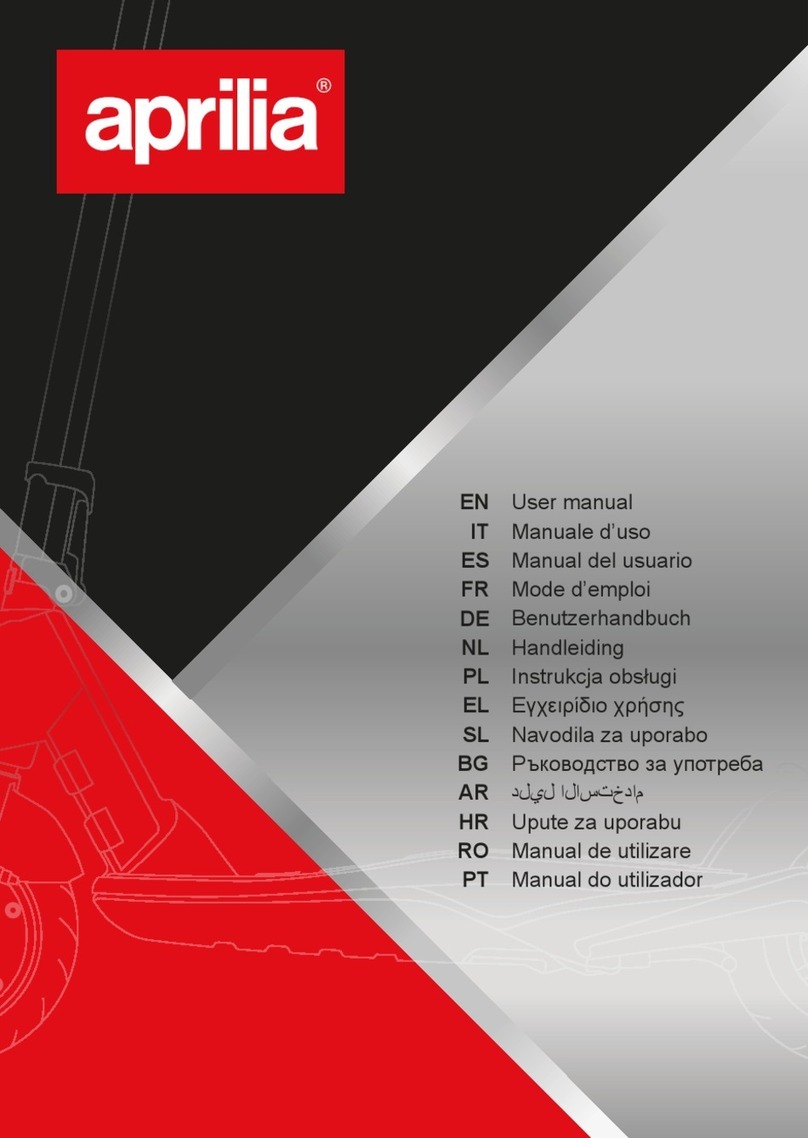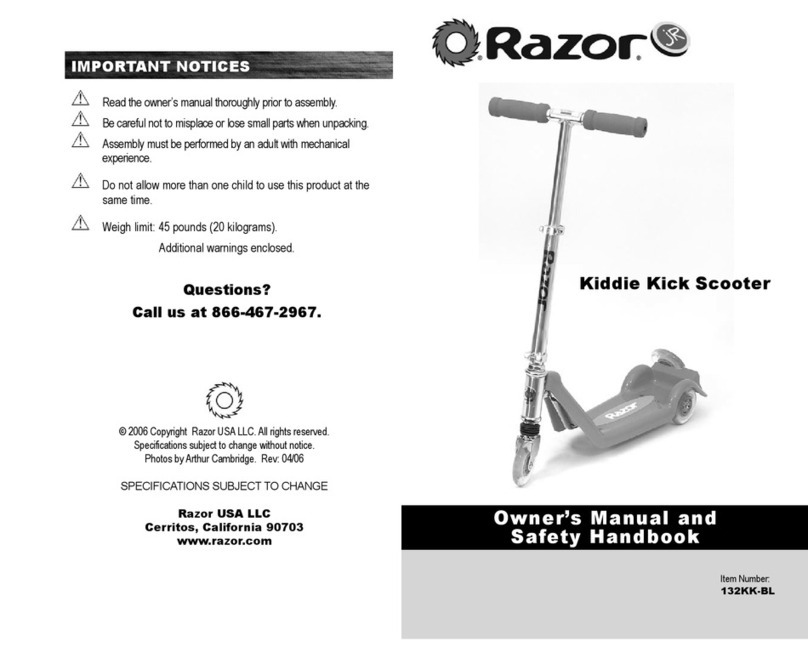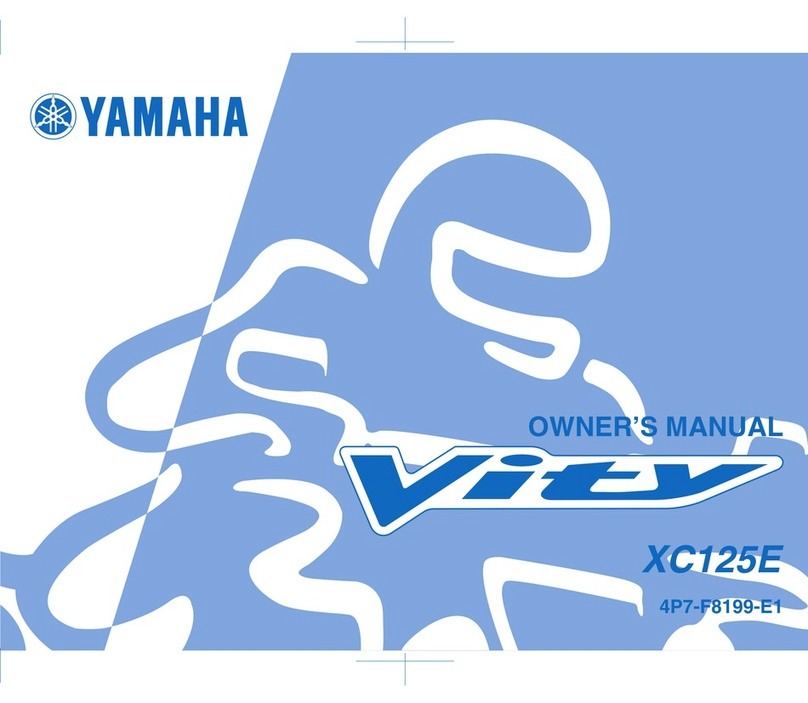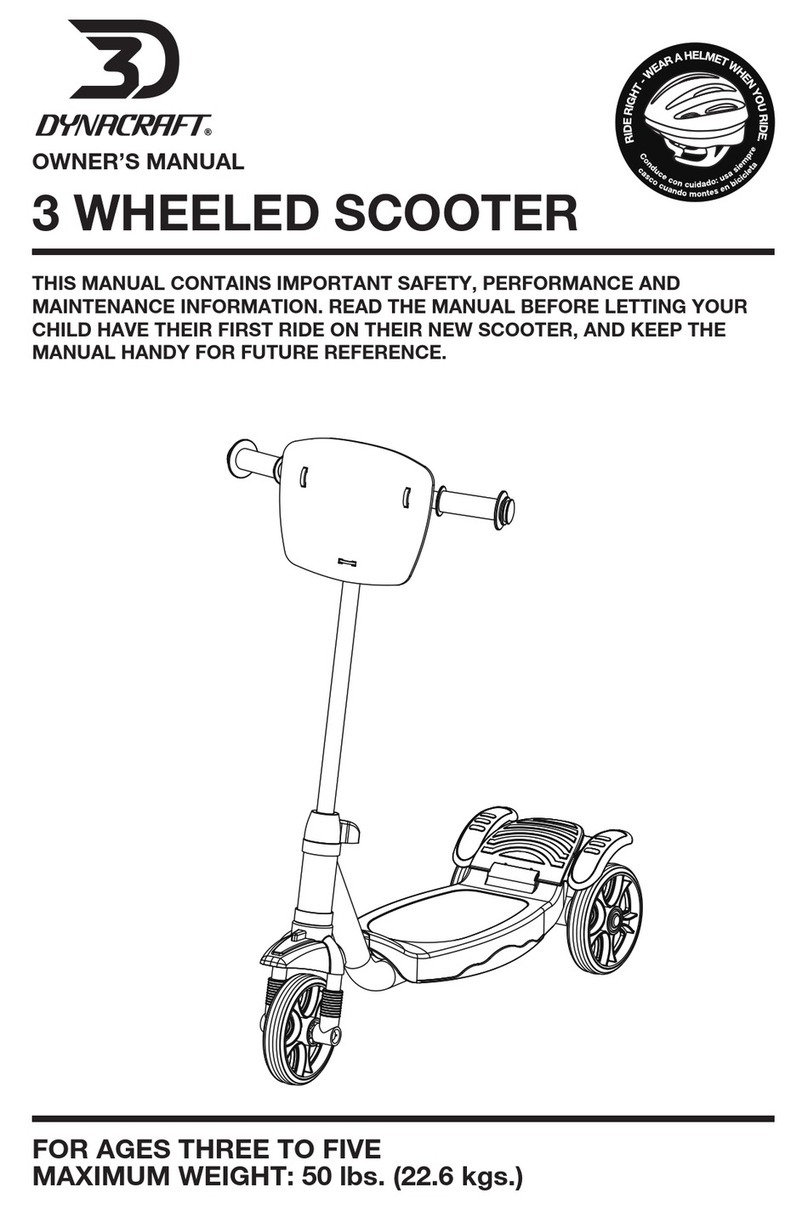Transporter GL Guide

D82008305 REV A 1/26/09

2D82008305 REV A 1/26/09
All rights reserved. No part of this publication may be reproduced, stored in a
retrieval system, or transmitted in any form by any means, electronic, mechanical,
photocopying, recording or otherwise, without the prior written permission of
HOVEROUND CORPORATION.
Neither HOVEROUND CORPORATION nor its affiliates shall be liable to the purchaser
of this product or third parties for damages, losses, cost or expenses incurred by
purchaser or third parties as a result of accident, misuse, or abuse of this product
or unauthorized modifications, repairs, or alterations to this product.
HOVEROUND is a registered trademark of the HOVEROUND CORPORATION. Other prod-
uct names used herein are for identification purposes only and may be trademarks
of their respective owners. HOVEROUND disclaims any and all rights in those marks.
Specifications and equipment subject to change without notice.

Table Of Contents
Chapter 1 Rules For Safely Operating Your Scooter. . . . . . . . . . . . . . . . . . 4-5
Chapter 2 Getting To Know Your Scooter. . . . . . . . . . . . . . . . . . . . . . . . 6-10
Chapter 3 Free-Wheeling Your Scooter . . . . . . . . . . . . . . . . . . . . . . . . . . . 11
Chapter 4 Learning To Get Around. . . . . . . . . . . . . . . . . . . . . . . . . . . . 12-15
Chapter 5 Disassembling And Reassembling Your Scooter . . . . . . . . . . 16-17
Chapter 6 Batteries And Battery Charging . . . . . . . . . . . . . . . . . . . . . . 18-21
Chapter 7 Care And Maintenance. . . . . . . . . . . . . . . . . . . . . . . . . . . . . 22-24
Chapter 8 Trouble Shooting . . . . . . . . . . . . . . . . . . . . . . . . . . . . . . . . . 25-26
Chapter 9 EMI Warning . . . . . . . . . . . . . . . . . . . . . . . . . . . . . . . . . . . . 27-28
Chapter 10 Specifications. . . . . . . . . . . . . . . . . . . . . . . . . . . . . . . . . . . . . . . 29
Appendix A: Record Of Service . . . . . . . . . . . . . . . . . . . . . . . . . 30
Limited Warranty. . . . . . . . . . . . . . . . . . . . . . . . . . . . . . . . . . . . 31
D82008305 REV A 1/26/09 Table Of Contents 3

4 Chapter 1: Rules For safely Operating Your Scooter D82008305 REV A 1/26/09
Chapter 1
Rules For Safely Operating Your Scooter
Your scooter is a powerful electric vehicle. Please read the following notes carefully
to ensure safety at all times and prevent personal injury. Always make certain your
scooter is in full working order before use.
The “Dos And Do Nots”
1. Do not ride your scooter without reading and understanding this instruction
manual first.
2. Do not climb or drive on slopes greater than 8 degrees.
3. Do not carry passengers or exceed the maximum weight capacity:
Transporter GL 300 pounds.
4. Do not mount or dismount your scooter unless it has come to a full stop and
is turned off.
5. Do not switch your scooter on with the forward/reverse lever depressed.
6. Do not mount or dismount your scooter unless the speed adjustment dial is
set to minimum, and power is turned off.
7. Do not back up your scooter onto uneven inclines or surfaces.
8. Do not drive your scooter in a confined space unless the speed adjustment
dial is set to minimum.
9. Do not turn suddenly at full speed, especially on uneven or hilly ground.
Failure to observe this may result in tipping of your scooter.
10. Do not drive your scooter unless the seat and tiller are locked into the driving
position.

11. Do not drive your scooter over deep, soft terrain (Examples: soft dirt, deep
grass, loose gravel.)
12. Do not operate your scooter when under the influence of alcohol or certain
drugs, which may impair your safety.
13. Do not climb onto curbs or curb cut-outs that exceed your scooter’s capability.
Do not turn when negotiating curbs. Always approach curb cut-outs at low
speed and straight on.
14. Always come to a full stop before changing direction (forward or reverse).
15. Always keep your feet on the scooter when driving.
16. Always proceed carefully while riding your scooter, especially when
approaching a ramp or a hill.
17. Always proceed carefully while riding on uneven surfaces.
18. Do not sit on your scooter while being transported in a moving vehicle.
Always tie your scooter down and sit in a vehicle seat.
19. Do not drive your scooter through deep water or leave exposed to heavy rain.
20. Do not drive your scooter if the rear anti-tip wheels are damaged or removed.
21. Do not clean your scooter with a high pressure spray.
Hoveround Corporation is not responsible for any damage or injury due to improper
or unsafe use of its scooters.
D82008305 REV A 1/26/09 Chapter 1: Rules For safely Operating Your Scooter 5

6 Chapter 2: Getting To Know Your Scooter D82008305 REV A 1/26/09
Chapter 2
Getting To Know Your Scooter
Congratulations on your purchase of a Hoveround scooter. This scooter offers a
combination of style and comfort, and a wheelbase designed for easy maneuver-
ability both indoors and outdoors. Direct drive rear wheels and electro-mechanical
brakes provide a safe comfortable ride.
Adjusting Your Tiller
The tiller can be placed in one of five upright positions or folded down for trans-
port. To release the tiller, push the red tiller-locking lever, located on the lower left
side of the tiller console, from left to right. When the tiller is in the desired posi-
tion, release the lever to lock the tiller in place. Make sure the tiller is securely
locked in place before driving, (See Figure 2A, Below).
FIGURE 2A
Tiller
Locking
Lever
WARNING: Always make sure the tiller is in the upright position and
the safety knob is fully engaged before driving your scooter.

Control Features
Please use this section to familiarize yourself with the controls. See Chapter 4 for
important information on how to operate and drive the scooter.
Your controls are located on the handlebar console, (See Figures 2B and 2C).
FIGURE 2B FIGURE 2C
1. On-Off Key Switch: Located at the right hand side of the control console. To
turn “on” insert the key and turn to the right (clockwise).
To switch “off” your scooter, turn the key counter clockwise. Make sure to
remove the key when the vehicle is unattended.
D82008305 REV A 1/26/09 Chapter 2: Getting To Know Your Scooter 7
21
31
5
6
4
CAUTION: Do not switch to “off” when scooter is moving. Doing so
will result in the sudden application of the motor brake, a dangerous
situation.

8 Chapter 2: Getting To Know Your Scooter D82008305 REV A 1/26/09
When the scooter is in motion, you should ONLY switch “off” in the case of an
emergency. Continual use in this mode may cause undue stress to the drive sys-
tem and damage the main electronic speed control unit. Be extremely cautious on
slopes. Sit upright in your seat or your scooter may become less stable.
2. Battery Indicator Gauge: (Figure 2C) Located at the top of your console.
When your scooter is switched on, the bar on the gauge will move across the
scale from the left to right, indicating fully charged batteries. As the power is
used up, the bars will move left indicating the level of charge. When the
batteries are fully charged all bars are illuminated.
3. Speed Adjustment Dial: (Figure 2B) Used to pre-select your desired speed,
this dial is proportional to speed and can be set anywhere between 1 and 10.
Turn the knob counter-clockwise to “minimum” for gentle operation, and
clockwise towards “maximum” to increase speed.
NOTE: When attempting to climb slopes, you may need to set the dial to a
high setting. Remember the higher the number you set your speed dial,
the faster your scooter will travel.
4. Speed Control Lever: (Figure 2B) This lever controls forward and reverse
speed. Pushing the right thumb lever moves your scooter forward and
controls the speed by the amount of pressure applied.
Pushing the left thumb lever moves the scooter in backward and controls the
speed by the amount of pressure applied. When released, both levers will
return to the neutral position and you will stop gently.
Note: You can reverse this procedure by pulling the levers backwards.
5. Light Switch: (Figure 2C) Pressing this blue button turns the lights on and off.
6. Horn: (Figure 2C) Press the yellow button to sound horn.

Seating Adjustments
1. Seat Height Adjustments (Figure 2D, Below)
Located on the main frame, the post holding the seat has height adjustment
holes. To change the seat height, fit the locking pin in any of the holes.
FIGURE 2D
2. Seat Post Tension Adjustment (Figure 2D, Above)
To ensure maximum stability and reduce side-to-side motion, tighten the
tension knob on the seat post. Note: The knob is not for adjusting the seat
height.
3. Armrest Width Adjustment (If so equipped) (Figure 2E, Below)
Loosen the armrest knob to adjust the space between armrests. Retighten the
knob to secure. The arms can be removed for transport but do not use the
scooter without the arms in place and both knobs tightened.
FIGURE 2E
D82008305 REV A 1/26/09 Chapter 2: Getting To Know Your Scooter 9
Locking
Pin
2
33
1

10 Chapter 2: Getting To Know Your Scooter D82008305 REV A 1/26/09
4. Armrest Angle Adjustment (If so equipped) (Figure 2F, Below)
For easy seat access, flip the armrest up by pulling up on the end. To adjust
the angle, loosen the bolt and lock nut under the arm rest. Re-tighten to hold
the angle in place.
5. Armrest Pad Length Adjustment (If so equipped) (Figure 2G, Below)
To extend the armrest, adjust the knob underneath. Tighten to hold in place.
6. Seat Slide Adjustment (If so equipped) (Figure 2G, Below)
Adjust your seat forward or back by pulling up on the lever and moving the
seat in the desired direction. As soon as you release the lever, the seat will
lock in the new position.
FIGURE 2F FIGURE 2G
7. Seat Swivel Adjustment (If so equipped) (Figure 2F, Above)
To swivel and lock the seat into one of four positions, pull up and hold the
spring loaded lever under the right side of the seat.
8. Captain Seat Backrest Angle Adjustment (If so equipped) (Figure 2F, Above)
To adjust the back rest angle up to a maximum of 12 degrees, adjust the
screw and lock nut on each side of the base. The back also has an adjustable
headrest. The back folds down on to the seat for storage.
47
5
6
8

Chapter 3
Free-Wheeling Your Scooter
Freewheeling is used when you want to move your unit without riding on it.
There are two ways to do this:
1. Disengage the electromagnetic brakes (Figure 3A, Item A).
2. Lift front of the unit and let it ride on its anti-tip wheels (Figure 3A, Item B).
To disengage the electromagnetic brakes, turn the key to off, and depress the lever
underneath the shroud just above the back right wheel (Figure 3A, Item B). You
do not have to take the unit apart to reach this lever.
When you are done moving your scooter, always remember to engage the
lever again.
When the scooter is in the free-wheel mode it will not operate. You must re-engage
the freewheel lever to operate the scooter.
FIGURE 3A
D82008305 REV A 1/26/09 Chapter 3: Free-Wheeling Your Scooter 11
CAUTION: Never sit on or leave your scooter on a slope with the
free-wheeling lever is disengaged. When the free-wheeling brake is
disengaged you do not have braking function.
BA

12 Chapter 4: Learning To Get Around D82008305 REV A 1/26/09
Chapter 4
Learning To Get Around
Basic Driving
For your first drive, make sure your scooter is on a level surface and clear of any
obstacles.
Make sure the scooter is off before seating yourself. Make sure both feet are on
the deck while seated and while driving.
Ensure that the speed adjustment dial is turned to slow for your first drive. When
you have become more confident, you can increase the setting to a higher speed.
Put the on-off key into the slot and turn the key to the right (clockwise) to the on
position. The battery gauge will illuminate indicating the scooter is on.
Press the right speed control lever to start forward. You will very gently accelerate.
Release the lever, and you will gently stop. Practice these two basic functions until
you get used to them.
Steer the scooter by turning the handlebars in the direction you wish to maneuver.
Be sure to give a wide clearance when turning so the rear wheels follow the path
of the front ones. Cutting short on pavement corners can cause a back wheel to
go off the pavement, and create a stability problem. Avoid this at all times by steer-
ing an exaggerated arc around obstacles.
If you must steer in a tight spot, such as entering a doorway or when turning
around, stop and turn the handle bars to where you want to go, then apply the
power gently. This will make the scooter turn sharply with complete stability.
Practice in an open area until you are proficient.
CAUTION: If you are not an accomplished outdoor powered vehicle
driver, we strongly recommend that you first practice in an open,
safe area, free from traffic, preferably with a companion who can
assist you.

Driving in reverse requires attention. Be sure your speed control dial is turned to
slow before your reverse. Push the left thumb reverse lever.
Remember when you reverse, you have to steer in the opposite direction of
the way you want to go. Practice in an open space.
Moving Through Doorways
Approach an unfamiliar door slowly. Does it have a knob or a push bar? Does it
open toward you or away? Think in terms of using the power of the scooter to do
the work for you!
Hold the doorknob or bar in one hand and apply power with the other hand.
(Remember that you can drive forward or backward by pulling or pushing either
the right or left lever.) If the door is self-closing, go through and allow the door to
close behind you. If the door is not self-closing, just stop when you are clear of
the door and push it closed.
D82008305 REV A 1/26/09 Chapter 4: Learning To Get Around 13
WARNING: Do not turn your scooter off when it is in motion.
Failure to observe this warning may irreparably damage the main
electronic speed control unit or drive transmission. Always slow
your scooter down to a stop before you switch it off.
CAUTION: Be careful to not have your thumb on the forward –
reverse control levers when you switch your scooter on. This will
cause your scooter to go into a fault mode. If this happens switch
the key off then on again.

14 Chapter 4: Learning To Get Around D82008305 REV A 1/26/09
Control On Ramps
Some ramps have a change of direction where good cornering is required. Make a
wide maneuver around tight corners so that your back wheels follow a wide arc to
stay clear of the corner.
If you stop while facing uphill, the automatic parking brake will hold you safely. To
start again, simply push the forward direction lever. The parking brake will release
and you will start to move. Lean forward when accelerating up a ramp.
Going down the ramp, keep the speed dial set to slow. This will safely control
your descent. If you wish to stop completely, release the control lever and you will
come to a gentle stop.
Control On Grass, Gravel And Inclines
The scooter performs well on grass, gravel and on gentle hills. However, you must
not exceed the parameters established in this manual. Please refer to the “Rules
for Safely Operating Your Scooter” section. Safety must come first. If you are
unsure about a situation, avoid it.
Feel free to use your scooter on lawns or in park areas. Avoid tall grass.
Packed gravel, such as on driveways or roads will present few problems. Loose,
deep gravel, as well as loosely packed sand, should be avoided.
Never attempt to drive beyond the design capability of your scooter. Observe
weather conditions. Tires can slip on wet or icy conditions.
DO NOT drive through deep water or leave your scooter exposed to heavy
rain.
CAUTION: Because of the power of your scooter, you will be able to
climb hills. The maximum gradient limit for good stability is 8
degrees.

Please Note: The rear stability of your scooter is dependent on a number of
factors which you should consider before attempting to climb a steep slope or
other obstacle: a) your height, b) the rearward angle of your backrest, c) your
weight, and d) the angle of slope or height of obstacle you are attempting to
climb. All of these factors can affect the rear stability of your scooter. If you are
unsure of your capability to climb an obstacle, always think “safety first”.
Dismounting
Always switch off your scooter before dismounting. Make sure that you dismount
with the unit on a level surface.
Parking In Public
If you need to park and leave your scooter, simply remove your key. This will
keep the brake on and will make your scooter difficult to move. It is best to leave
it where someone can watch it for you. As a precaution note your serial number
and the date of purchase. Your serial number can be found on the lower section
of the back frame of the scooter.
D82008305 REV A 1/26/09 Chapter 4: Learning To Get Around 15

16 Chapter 5: Disassembling And Reassembling Your Scooter D82008305 REV A 1/26/09
Chapter 5
Disassembling And Reassembling Your Scooter
To transport your scooter in a car, follow these simple instructions. This procedure
can be carried out quickly and without tools, but you may need some assistance to
lift the components once your scooter is disassembled.
Note: You may need to remove baskets and any accessories to disassemble
your scooter.
1. Drive your scooter close to the vehicle.
2. Switch off your scooter by turning the key counter-clockwise.
3. Fold the seat back down, grab the sides of the seat and the red release lever.
Twist the seat slightly and lift to remove.
4. Remove the seat tightening knob and the seat locking pin (Figure 2D).
5. Remove the seat post and rear cover.
6. Remove the battery straps, then unplug and remove the batteries.
The battery plugs are color-coded black and red. Be sure to reconnect the
same colors when reinstalling the batteries. Depress locking tabs to release
connectors.
6. Disconnect the yellow, white and blue plugs on the chassis harness.
Remove the locking pin to release the locking tabs. Slide the front section
away from the rear section.
CAUTION: Do not place metal objects over open battery terminals.
Beware of short circuits. Make sure the terminals are covered by the
rubber protectors at all times.

7. Fold the tiller down by releasing the tiller locking lever (Figure 5A and Figure
2A, page 6).
FIGURE 5A FIGURE 5B
The scooter is now disassembled into its basic components (Figure 5B).
TAKE CARE: Protect clothing when lifting scooter parts; some components
may have lubricating fluids on their surfaces.
Determine the best position to stow each part of your scooter, depending on the
vehicle. It is a good practice to place batteries so they do not fall over and touch
the battery posts or any metal framework. An old blanket can protect the various
parts from rubbing against each other.
Your scooter will increase the load in your car, adjust your driving appropriately.
To reassemble, reverse the procedure.
D82008305 REV A 1/26/09 Chapter 5: Disassembling And Reassembling Your Scooter 17
CAUTION: The body molding on your scooter is not designed for
lifting your scooter. Use the chassis only.
Tiller
Locking
Assembly

18 Chapter 6: Batteries And Battery Charging D82008305 REV A 1/26/09
Chapter 6
Batteries And Battery Charging
For maximum performance, maintain your scooter batteries at full power. Nightly
recharging, after use, will give them a longer life and will ensure your scooter is
always ready to go when you are.
Batteries
Your scooter batteries are virtually maintenance free because the electrolyte is
immobilized and will not leak out, even if the battery is accidentally overturned.
Because your scooter batteries are sealed they are most likely to be accepted for
transport on all aircraft. Consult your carrier prior to departure if you wish them to
carry batteries.
Battery Charger
The battery charger supplied with your scooter may not be suitable for any other
power mobility product. Only use the charger supplied with your scooter. Other
makes of chargers may permanently damage your scooter batteries and would
void the warranty.
Charging The Batteries
Charge your scooter batteries when the battery gauge, located on the tiller
console, is in the far left position.
NOTE: The batteries will have a longer life if you do not use up all the
battery’s power. Recharge as soon as the battery gauge reaches two bars.

The guidelines below will assure your safety.
1. Do not smoke or use an open flame while charging your batteries.
2. Do not use an extension cord to charge your batteries as this could result in a
fire or electric shock.
3. Do not use the charger if it has received a sharp blow, been dropped or
otherwise misused in any way.
4. Do not dismantle the charger. This will void the warranty.
5. Do not switch off, unplug or interrupt the recharge cycle until the it has
completed.
6. Never attempt to open a sealed battery.
7. Do not use the charger if either the power cord or the output cord is
damaged.
Battery Replacement
When it becomes necessary to replace batteries, consult with an authorized Dealer.
The replacement batteries must be of the sealed, deep-cycle Gel electrolyte or
Sealed Lead Acid types of the appropriate size. We recommend that your dealer
install the new batteries for you. Dispose of the old batteries in accordance with
EPA regulations.
D82008305 REV A 1/26/09 Chapter 6: Batteries And Battery Charging 19
WARNING! Have your old batteries disposed of by the battery
supplier. Do not keep old batteries because they can be dangerous
to life, property, and the environment.

20 Chapter 6: Batteries And Battery Charging D82008305 REV A 1/26/09
FIGURE 6A - CHARGER PORT
To charge your batteries, follow these simple steps.
1. Switch off your scooter and remove the key.
2. Rotate the protective cover to expose the port on the right side of the tiller
console (Figure 6A, Above). Plug the charger end of the cord into the port.
3. Plug the AC end of the cord into a suitable wall outlet. Your charger is now
activated.
4. Battery Charger Indicator Lights
This is a two light charger.
1st light red This light indicates that the battery charger is on.
A blinking red light indicates abnormal connections.
2nd light green This light blinking indicates the unit charging.
A steady green light indicates the charge is complete.
The minimum time needed to recharge serviceable batteries fully is overnight. Just
plug in your charger before you go to sleep. This time may increase as batteries
get older although the scooter may be ready to use after 8 hours of charging.
During periods without use (storage) it is wise to charge the batteries monthly. If
your scooter has been stored away for some time, recharge your batteries before
using it.
Table of contents

